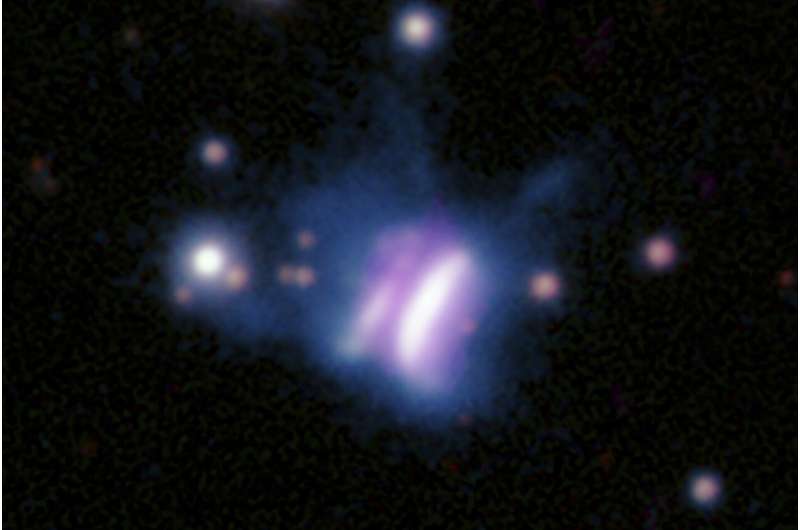This article has been reviewed according to Science X's editorial process and policies. Editors have highlighted the following attributes while ensuring the content's credibility:
fact-checked
peer-reviewed publication
reputable news agency
proofread
Astronomers find the biggest known batch of planet ingredients swirling around young star

Astronomers have discovered what they believe is the biggest known batch of planet-making ingredients swirling around a young star.
The diameter of this colossal disk is roughly 3,300 times the distance between Earth and the sun, with enough gas and dust to form super-sized planets in far-flung orbits, the U.S. and German researchers reported this week.
First spotted in 2016, the disk around a star 1,000 light-years away was not confirmed to be a hotbed for new, emerging planets until recent observations by telescopes in Hawaii. A light-year is 5.8 trillion miles.
It's so massive and rich in dust and gas, the building blocks of planets, that scientists can learn more about "the birth and evolution of worlds beyond our own," said lead author Kristina Monsch of the Harvard-Smithsonian Center for Astrophysics.
This so-called protoplanetary disk looks like a butterfly in the images, according to Monsch. The dark, dusty strip in the middle resembles the elongated body of a butterfly, she said, while the blue and white lobes seem like wings and the two narrow filaments on top the antennae.
Findings were described in Monday's Astrophysical Journal Letters. Another paper by some of the same researchers also has been accepted for publication.
The disk, designated as IRAS 23077, is about double the size of the previous record-holder, Monsch said.
NASA's Hubble and Webb space telescopes may be able to discern whether planets the size of Jupiter or even bigger are already forming, Monsch said. Any rocky planets like our own would likely be too small to see and even bigger planet-forming systems are probably out there.
"We just have to look for them," she said.
More information: Kristina Monsch et al, High-resolution Pan-STARRS and SMA Observations of IRAS 23077+6707: A Giant Edge-on Protoplanetary Disk, The Astrophysical Journal Letters (2024). DOI: 10.3847/2041-8213/ad3bb0
Journal information: Astrophysical Journal Letters
© 2024 The Associated Press. All rights reserved. This material may not be published, broadcast, rewritten or redistributed without permission.



















